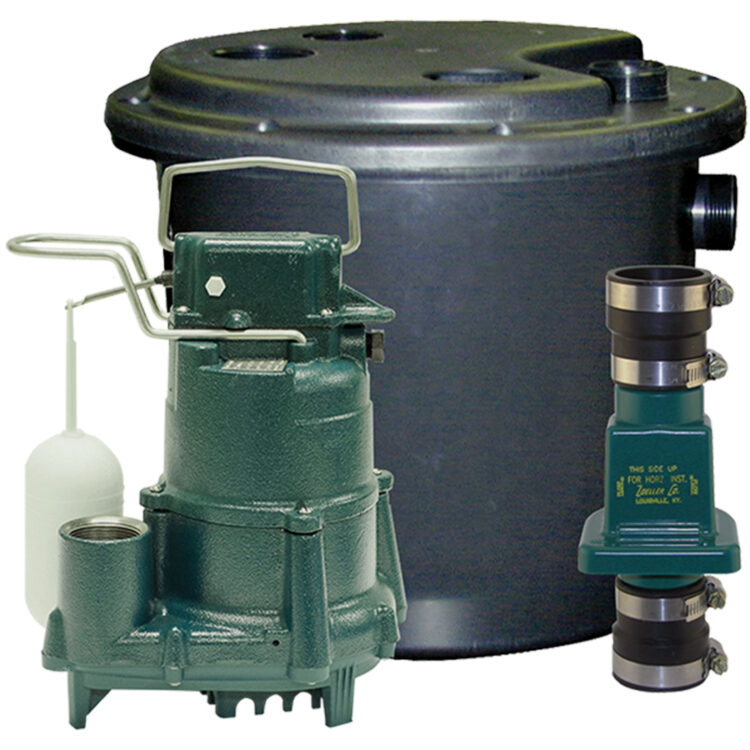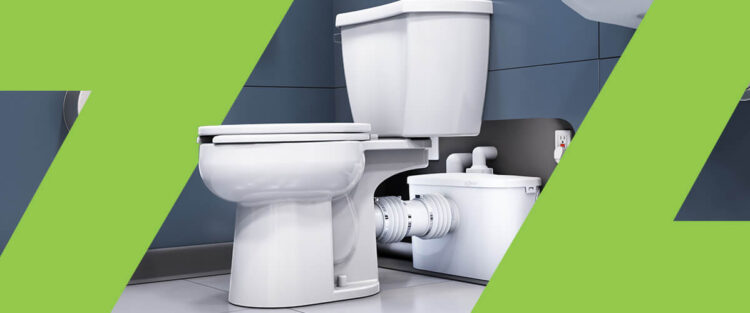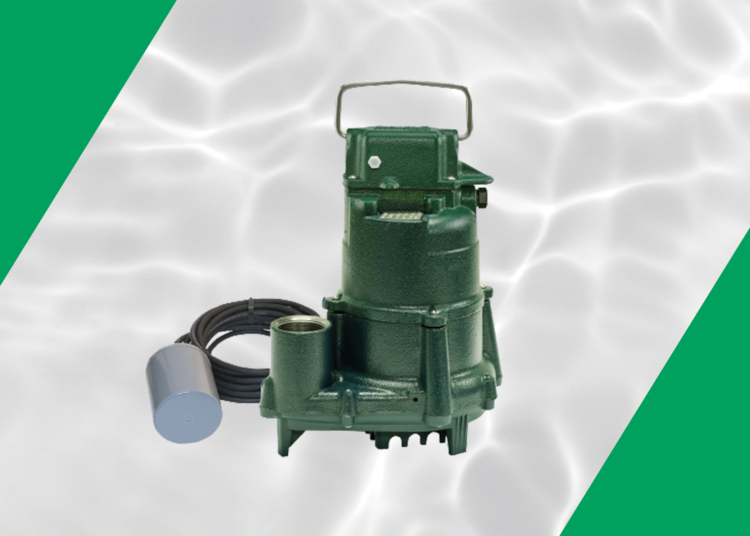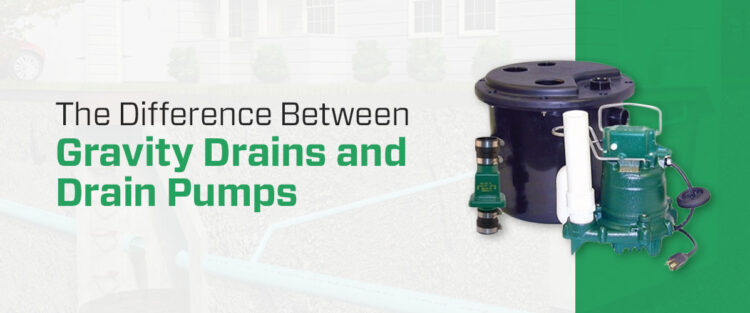
Drainage pumps are necessary for proper drainage when water appliances sit lower than a home’s main sewer line. Most appliances can drain correctly using gravity drains, but those in basements typically require drainage pumps to move water upward.
A drain pump system uses force to transfer wastewater to a home’s main sewer line. Understanding the difference between a gravity drain and a drain pump can help you apply the appropriate drainage systems to your clients’ water appliances.
What Is a Gravity Drain?
A gravity drain uses gravity to move wastewater from an appliance to the main sewer line. If the appliance’s outlet pipe is above the waste pipe, a gravity drain is sufficient because the wastewater can flow down to reach it.
A homeowner can use a gravity drain for an appliance that sits lower than the waste pipe only if they mount it on a stand that holds it securely above its level. A drain pump is necessary if there is no way to elevate the appliance higher than the waste pipe.
What Is a Drain Pump?
A drain pump is a pump that removes water from appliances that cannot use gravity flow. If an appliance’s outlet pipe sits below the waste pipe and cannot mount to a stand above, it requires a drain pump. Drain pumps handle wastewater from appliances such as toilets, wet bar sinks, laundry trays, dehumidifiers and air conditioners. A homeowner can also combine a drain pump with a dishwasher or garbage disposal.
Wastewater must travel upward when its outlet pipe is above the waste pipe. A drain pump collects wastewater and uses force to push it upward to a home’s main drainage system. When water drains from an appliance, it enters a chamber in the drain pump, triggering a float switch to activate the pump. When the pump turns on, it pushes water up through a pipe connected to the main drainage system.
Gravity Drain vs. Drain Pump — Similarities and Differences
Gravity drains and drain pumps are similar because they move wastewater from water appliances to main sewer lines. Installing one of these systems is necessary for any water appliance to drain properly, and both systems require a connection to an open-site drain.
The primary difference between a gravity drain and a drain pump is each system’s application. While a gravity drain is sufficient for most uses, it’s essential to understand when a property needs a drain pump.
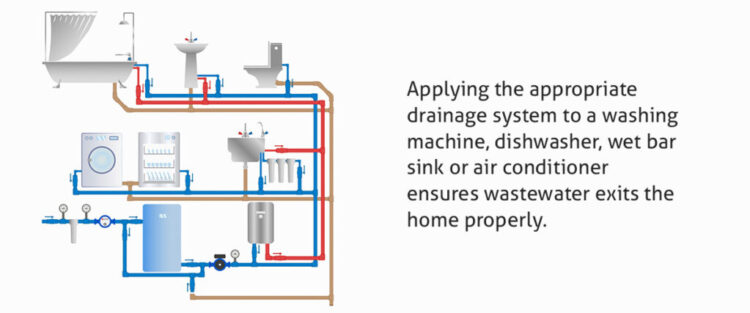
How to Know if You Need a Gravity Drain or a Drain Pump
When installing a new water appliance in a client’s home, you must also install the correct drainage system. Applying the appropriate drainage system to a washing machine, dishwasher, wet bar sink or air conditioner ensures wastewater exits the home properly. You can determine whether your client’s home needs a gravity drain or a drain pump with the following steps.
Consider the Water Appliance
Since drain pumps move wastewater upward, they are typically necessary for underground dewatering. A home most likely needs a drain pump if it contains any water appliances in its basement.
A homeowner may have a basement laundry room or a wet bar to entertain guests. Appliances like these are usually lower than the main sewer line and require a drain pump. If you are installing new water appliances for your clients, consider these appliances’ location in the home.
Locate the Home’s Main Sewer Line
While a home’s upstairs water appliances can drain water down to its main drainage system, basement appliances are typically too low to use gravity. To determine whether or not each client needs a drain pump for a water appliance, you must first locate their home’s waste pipe and main sewer line.
Every pipe in a house leads to a main sewer line, which carries wastewater to its septic tank or municipal wastewater treatment system. A home’s main sewer line is typically in the garage, basement or crawlspace. Some homes have outdoor waste pipes providing access to the sewer line, while others contain this pipe indoors. Search the home’s basement, garage, crawlspace and back and front yards for this pipe until you locate it.
A waste pipe usually has a four-inch diameter and a screw cap. The cap’s top should have a square knob or notch. If you cannot find the waste pipe inside a house, it is probably in the yard. Search around the home’s foundation or the edge of its yard near the road. A home’s main sewer line connects to the municipal sewer main under the street, so waste pipes are commonly near the street.
Most waste pipes stick out of the ground, but the pipe could be underground if you can’t find it. Overgrown weeds or landscaping can also cover it, so remember that if you don’t notice it at first.
If you can’t find the main sewer line, you can try the following strategies.
- Contact a plumber: A plumber has the expertise to locate waste pipes, which can save you and your clients time and energy searching on your own.
- Contact the home’s previous owner: If your clients have the previous homeowner’s contact information, they may be able to tell you where the waste pipe is.
- Visit your local municipality: Your local city hall should have maps displaying where each property’s sewer line is.
Compare Locations
Once you locate a home’s waste pipe, you can determine if it is at a higher or lower location than the home’s water appliances. You will need to supply your client with a drain pump if any fixture is lower than the waste pipe.

Zoeller Pump Company’s Drain Pump Series
Water pumps such as drain pumps use powerful force to push wastewater upward when gravity drains do not suffice. If you install any water fixtures lower than your clients’ waste pipes, they will need help transferring wastewater to the main sewer line. Drain pumps allow water appliances in lower areas of homes to drain properly and move wastewater where it needs to go.
Provide your clients with high-quality solutions from our drain pump series or our collection of drain pumps with specialized options. Zoeller Pump Company offers durable, long-lasting drain pumps with the necessary force to move wastewater from appliances to the sewer line. Find a distributor near you to purchase top-performance drain pumps.


